Key Points:
- The 2,350-mile-long Mississippi River is home to 120 species of fish.
- The largest fish in the river range from 2 feet to 9 feet long.
- At 385 lb and 9ft long, the Gulf Sturgeon is the largest fish in the Mississippi River.
The Mississippi River starts at the 1.8 square mile lake, Lake Itasca, in Minnesota. Flowing 2,350 miles south, it flows down through Baton Rouge, Louisiana, and empties into the Gulf of Mexico. The river serves as the border between Minnesota and Wisconsin, Iowa, and Illinois, along the border of Missouri to Arkansas and Tennessee, down to Mississippi, and cuts right through Louisiana.
According to the National Park Service, there are more than 120 fish species inhabiting the Mississippi River. The freshwater drum is one of the most commonly caught fish in the river, but at an average of 10-14 inches and 3 lbs, they are certainly not the biggest fish in the river. Let’s look at some of the river’s monsters, the biggest fish in the Mississippi!
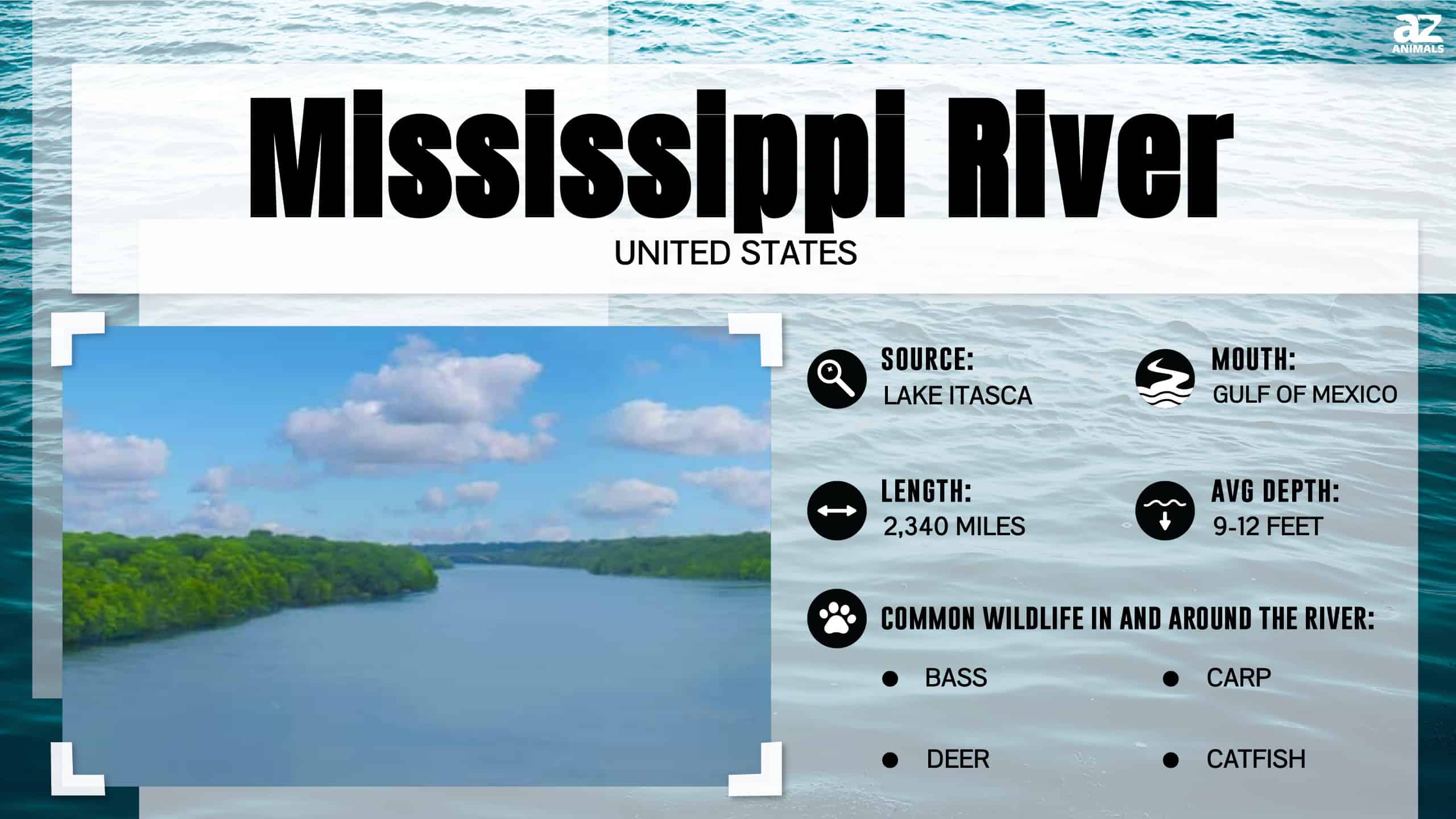
10. American Eel

Female American eels make their way up the Mississippi, with some making it to Minnesota!
©Rostislav Stefanek/Shutterstock.com
You may be surprised to learn that eels live in the Mississippi. Although not the heaviest at around 1-3 lbs, they are a long fish, with the average female being 2-3 feet long. Some can measure as much as 5 feet long. American eels have a remarkable migration. They hatch in the Sargasso Sea and then float on the currents to the brackish waters in the Gulf of Mexico, where the Mississippi empties. The males remain here to live, and the females start the long journey up the Mississippi, finding homes along the way in rivers and streams. Some make it to Minnesota! Now that is a long way home!
9. Longnose Gar
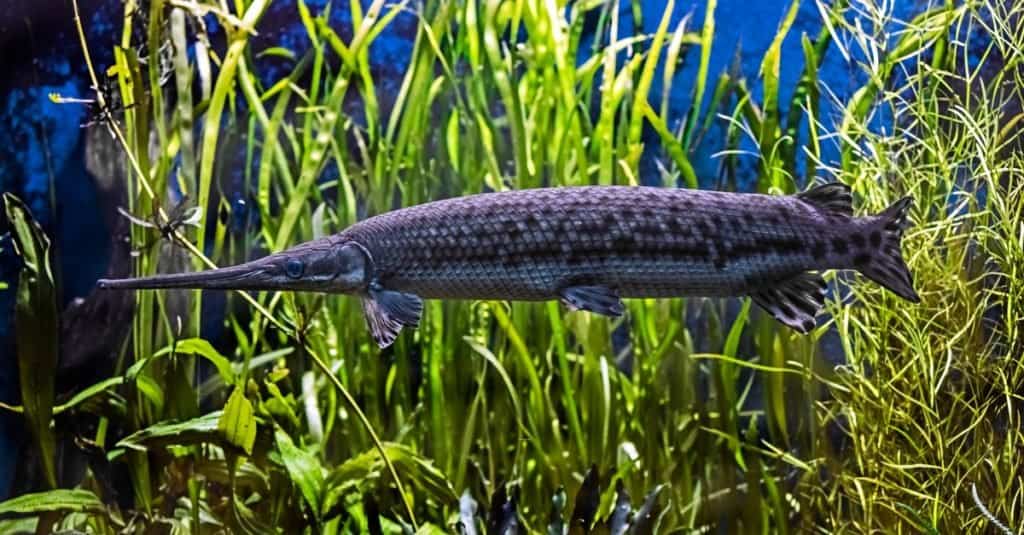
The longnose gar can be 3-5 feet long (including its unusually long nose!).
©Mikhail Blajenov/Shutterstock.com
Longnose gars are heavier and long at 20-40 lbs and 3-5 feet in length (although much of that is their long nose!), respectively. They have long slender bodies covered in scales. Watch out because that long narrow snout is lined with tiny sharp teeth!
8. Striped Bass
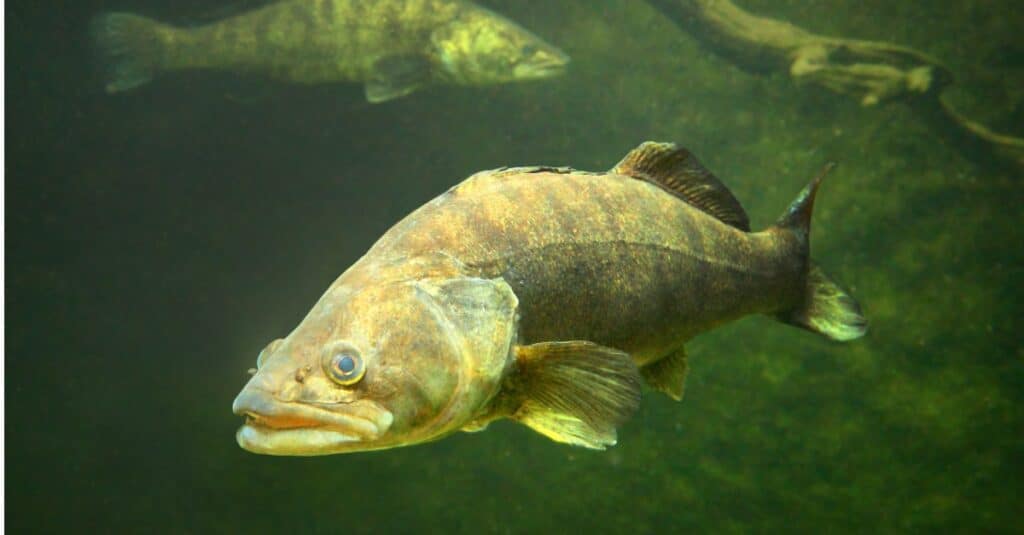
Striped bass are called “stripers” and can get to be 45 lbs.
©iStock.com/abadonian
Many fishermen and women enjoy fishing for bass. The striped bass (commonly called stripers) are the largest of the bass fish. They are born in freshwater but typically live in saltwater. The largest stripers can get to be 45 lbs!
7. Channel Catfish

Channel cats have cat-like whiskers and can get to be 50lbs.
©Sergey Goruppa/Shutterstock.com
“Channel cats,” as they are called, are some of the smaller catfish that can be found in the Mississippi, but they are also fishermen and women’s favorite. With their cat-like whiskers, they are easy to identify. Most channel cats are around 5-10 lbs, but some can get to 50 lbs or more! They are most active at night and love to eat another Mississippi River fish, the gizzard shad.
6. Flathead Catfish
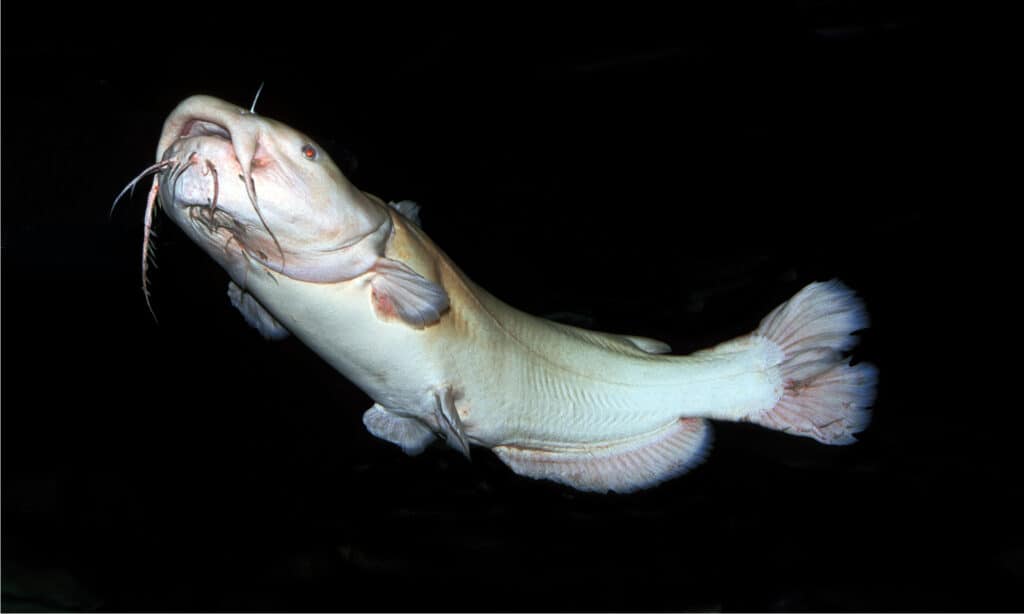
Flathead catfish can grow up to 4 feet long.
©slowmotiongli/Shutterstock.com
These catfish have the same whiskers as the channel cats but are a bit bigger in size. As their name suggests, they have flatter heads as well. Flathead catfish can get to be 4 feet long and 90 lbs. The largest one caught in Mississippi was in the Mississippi River and was 77.7 pounds, caught by Matt Bingham. The record was set in April of 2012. That’s a lot of Southern fried catfish for dinner!
5. Bighead Carp

Bighead carp are filter-feeders, but at 100 lbs, they are one of the biggest fish in the Mississippi River.
©Vladimir Wrangel/Shutterstock.com
Bighead carp are actually filter feeders, feeding on phytoplankton, detritus, and zooplankton, but somehow, they are able to eat enough to get to be 4 feet long and over 100 lbs! Their eyes are located lower on the head, and they are covered with silvery scales.
4. Paddlefish

Paddlefish can get to be 6 feet long and weigh 100lbs.
©Natalia Belay/Shutterstock.com
Paddlefish look like a third of their body is their long, paddle-like snout. They are nicknamed the “spoonbill” or “shovelnose.” They are also filter feeders and use their long snouts as a sensory tool to locate zooplankton and other tiny animals. Including their snout, they can get to be 6 feet long and weigh 100 lbs.
3. Blue Catfish
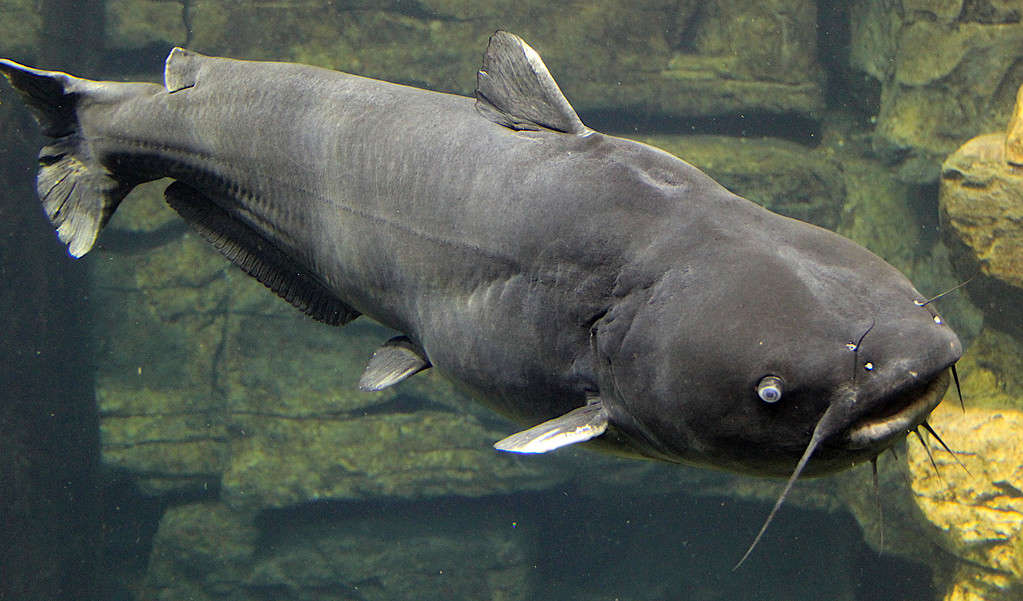
Blue catfish are one of the biggest fish in the Mississippi River and can grow to be 130lbs.
©Thomsonmg2000, cropped and adjusted by Kostka Martin / CC0 – License
If you thought a 90lb catfish was big, wait until you see a blue catfish. Blue catfish actually have a blueish tint with a white belly. They can get to be 5 feet long and weigh up to 131 lbs! The largest blue catfish caught in Mississippi was a 95lb catfish by Dakota Hinson on the Mississippi River in 2009.
2. Alligator Gar
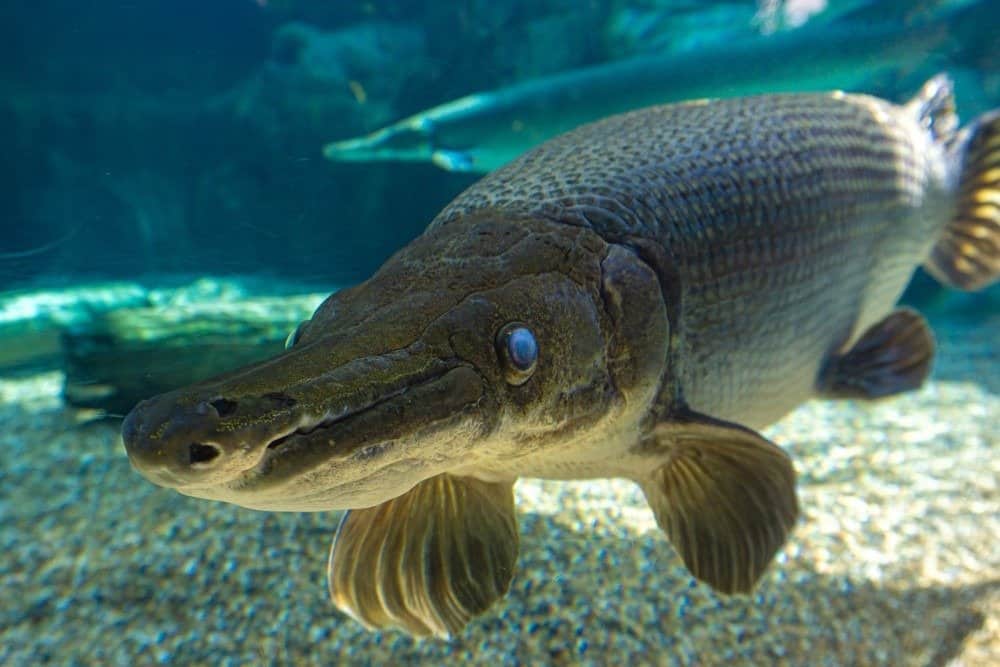
The
alligator
gar looks like an alligator but doesn’t get quite as big as one.
©TKBackyard/Shutterstock.com
The alligator gar can get to be 9 feet long! Think about your average adult that is closer to 5.5-6 feet tall; that is almost twice that! Alligator gars are also heavy, with some getting to be more than 300 lbs. Their head is the shape of an alligator head, and they are sometimes mistaken for alligators.
1. Gulf Sturgeon

The Gulf sturgeon is the biggest fish in the Mississippi River.
©Chase D’animulls/Shutterstock.com
The biggest fish in the Mississippi River is the Gulf sturgeon. Gulf sturgeons are a sub-species of the Atlantic sturgeon and can be found in both freshwater and saltwater, depending on the time of year. Gulf sturgeons look like armored tanks! They are covered in five “scutes,” which are bony plates that line their back. These giant fish can be 9 feet long and weigh up to 385lbs! That is about the same weight as an adult male gorilla! Can you imagine trying to reel one of those in? Now that would be quite the fish tale.
How Long Do Gulf Sturgeon Live?
On average, the Gulf Sturgeon lives about 20-25 years, although some specimens have been documented that reached upwards of 50 years old! The Gulf Sturgeon lives in accordance with its environment, using the riverbed as a means of external fertilization wherein the female deposits her eggs in the river floor for the male to fertilize sometime thereafter. Spawning only occurs when the right temperate conditions have been met (anywhere from 59°F to 68°F), and Gulf Sturgeons will travel up or downstream along the Mississippi until they have found the perfect environment for their eggs to incubate.
Summary of River Monsters: Discover the Biggest Fish in the Mississippi River
| Largest to Smallest | Species |
|---|---|
| 1 | Gulf Sturgeon |
| 2 | Alligator Gar |
| 3 | Blue Catfish |
| 4 | Paddlefish |
| 5 | Bighead Carp |
| 6 | Flathead Catfish |
| 7 | Channel Catfish |
| 8 | Striped Bass |
| 9 | Longnose Gar |
| 10 | American Eel |
Animals That Live Around The Mississippi River
While over 120 species of fish call the Mississippi River their home, the riverbank and the Mississippi River Delta provide habitat to countless songbirds, waterfowl, mammals, and even humans! Some mammals that you may encounter swimming in the Mississippi’s waters include beavers, otters, and muskrats. Most other mammals who live around the Mississippi such as deer and coyotes only visit the water to drink and bathe.
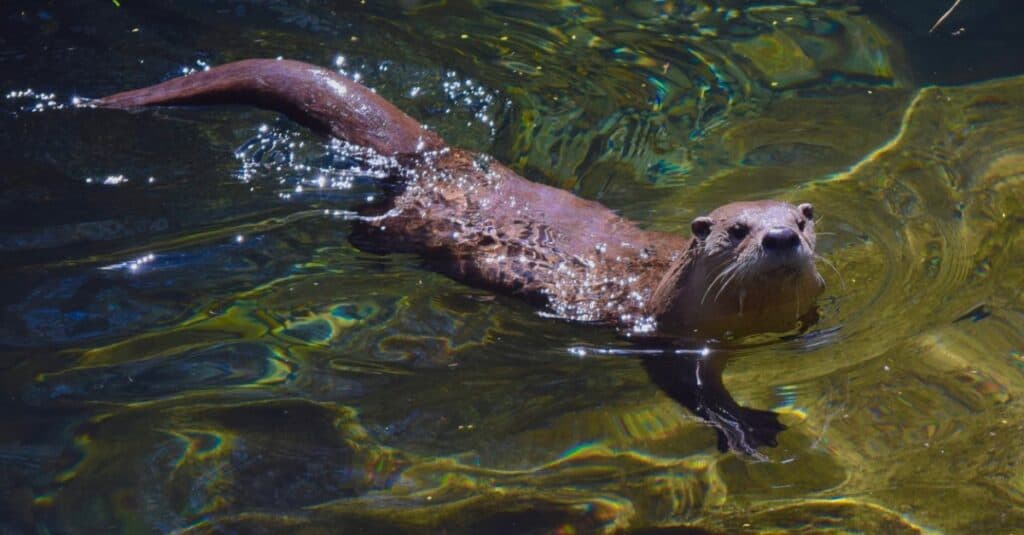
Otters share the waters of the Mississippi with beavers, muskrats, and a wide array of fishes.
©iStock.com/Kathryn Farley
Mississippi River Fun Fact: A raindrop that fell in Lake Itasca at the headwaters of the Mississippi would take about 90 days to reach the Gulf of Mexico!
The photo featured at the top of this post is ©
Thank you for reading! Have some feedback for us? Contact the AZ Animals editorial team.






